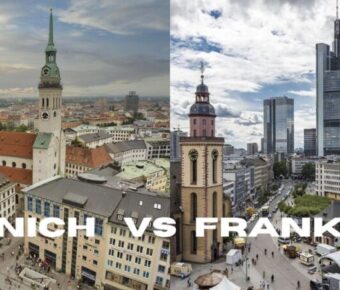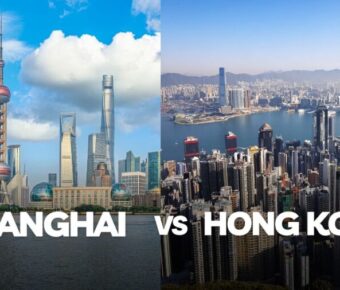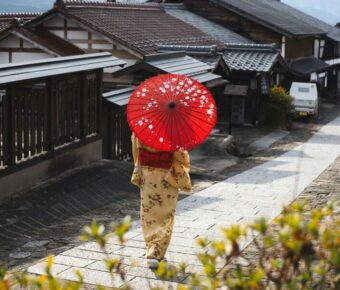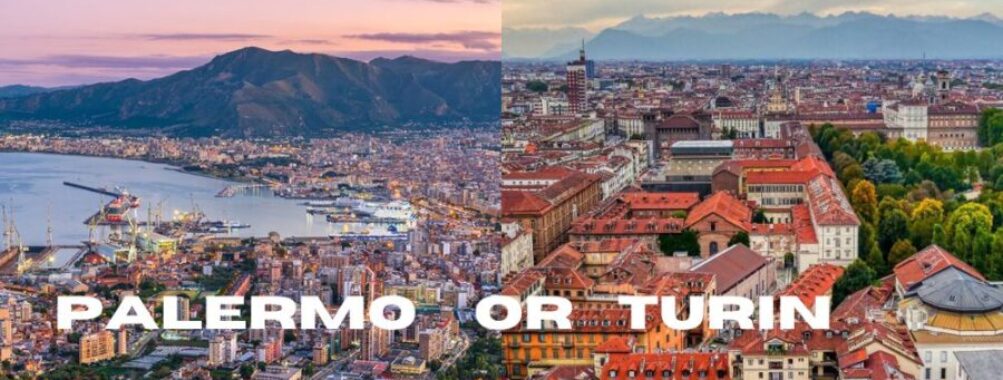
Palermo vs Turin: 5 Must-Know Differences Between Italy’s Northern and Southern Gems
Choosing between Palermo and Turin presents two distinctly different sides of Italy. The northern sophistication of Turin stands in stark contrast to Palermo’s raw Mediterranean charm. Turin costs about 16% more to visit than Palermo, with higher prices for everything from restaurants to housing, but offers a more polished urban experience with its elegant architecture and refined cultural scene.
These two cities showcase Italy’s diverse character. Turin dazzles with its baroque palaces and world-class museums, while Palermo captivates visitors with its bustling markets and Norman-Arab architecture. Most travelers spend 2-3 days exploring either city, though Palermo tends to be more popular with families.
The two cities have very different weather patterns. Turin experiences four distinct seasons with cold winters, while Palermo enjoys a typical Mediterranean climate with mild winters and hot summers. This makes Palermo a great winter escape, while Turin shines in spring and fall.
Contents
- Location and Climate
- Geographic Overview of Palermo and Turin
- Climate Comparison and Best Travel Times
- Cultural Highlights and Attractions
- Distinctive Architecture and Sights
- Top Museums to Visit
- Historical Sights and Landmarks
- Leisure and Outdoor Activities
- Beach Activities and Water Sports
- Shopping Experiences
- Family-Friendly and Adventure Opportunities
- Food and Culinary Scene
- Dining and Cuisine Options
- Nightlife and Socializing Spots
- Travel and Living Cost Comparison
- Expense Overview for Visitors
- Cost of Living for Residents
- Accommodation and Stay Options
- Hotels for Different Budgets
- Unique Local Stays
- Traveler Types and Itineraries
- Solo Travel and Backpacking Tips
- Couple Getaways and Romantic Retreats
- Family Trips and Activities
- Frequently Asked Questions
- What unique attractions can tourists find in Palermo?
- How does Turin’s cultural scene compare to other Italian cities?
- Can you recommend hidden gems in Palermo for seasoned travelers?
- What are the must-visit historical sites in Turin?
- In terms of culinary experiences, how does Palermo stand out?
- Are there any notable festivals or events exclusive to Turin?
- More Travel Guides
Location and Climate
Palermo and Turin sit at opposite ends of Italy, with distinct geographic positions that shape their vastly different climates and seasonal patterns. Their locations strongly influence when to visit each city.
Geographic Overview of Palermo and Turin
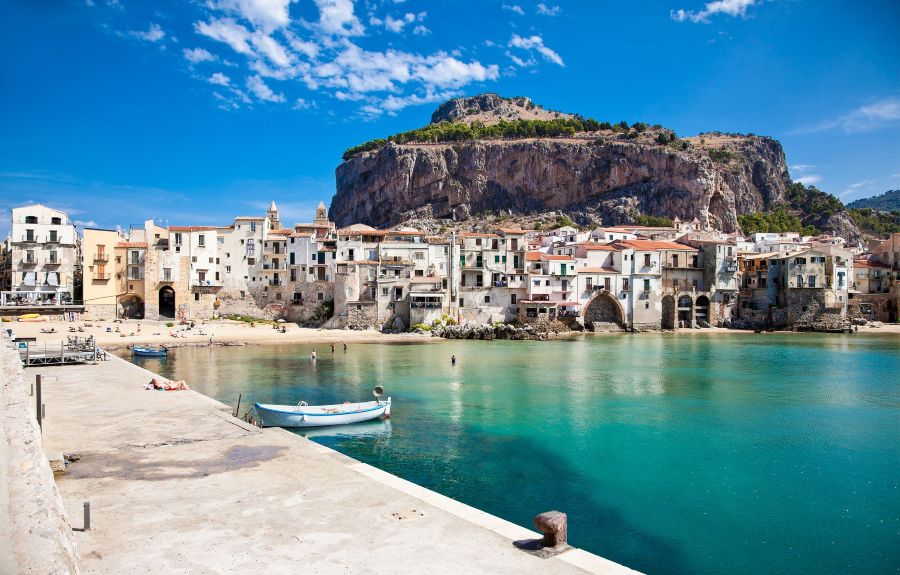
Palermo graces Sicily’s northern coast, nestled along the Tyrrhenian Sea. The city’s coastal location provides easy access to beautiful Mediterranean beaches and dramatic seaside cliffs.
Turin lies in northern Italy’s Piedmont region, surrounded by the Alps. The city sits at the foot of these majestic mountains, with the Po River flowing through its center.
The straight-line distance between these cities spans 904 kilometers (562 miles), highlighting Italy’s geographic diversity from north to south.
Climate Comparison and Best Travel Times
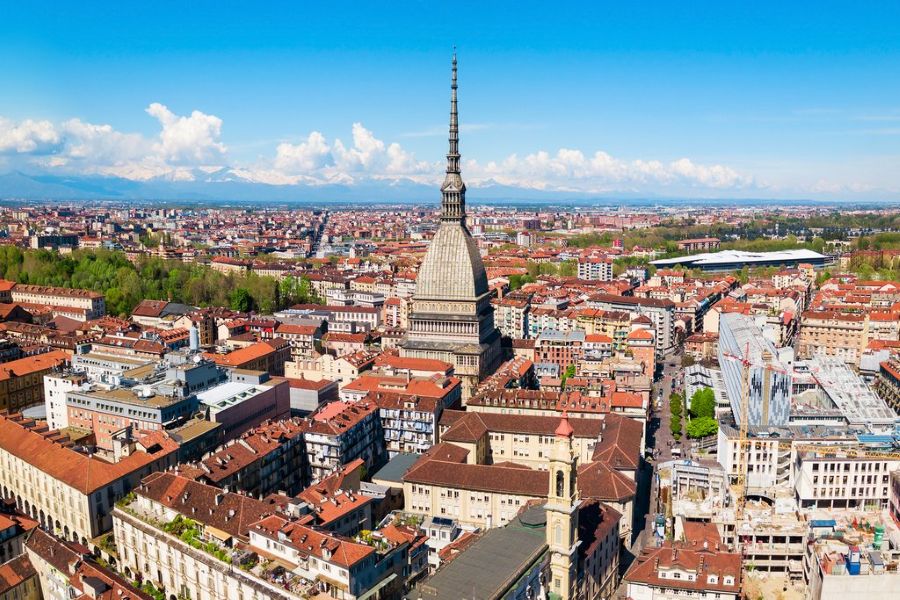
Palermo enjoys a classic Mediterranean climate with mild winters and hot summers. Winter temperatures rarely drop below 10°C (50°F), making it pleasant year-round. The city basks in sunshine with over 3,000 annual hours of light.
Turin experiences four distinct seasons typical of northern Italy. Winters can be cold and foggy, while summers bring warm temperatures and occasional humidity. Spring and fall offer the most comfortable weather for exploring the city.
Best times to visit:
- Palermo: March to May or September to November
- Turin: April to June or September to October
The cities’ contrasting climates mean you can escape Turin’s winter chill by heading to sunny Palermo, where outdoor activities remain enjoyable even in January.
Cultural Highlights and Attractions
Both Palermo and Turin showcase Italy’s rich cultural heritage through their distinct architectural styles, world-class museums, and impressive historical landmarks. Each city offers unique experiences that reflect their individual histories and cultural influences.
Distinctive Architecture and Sights
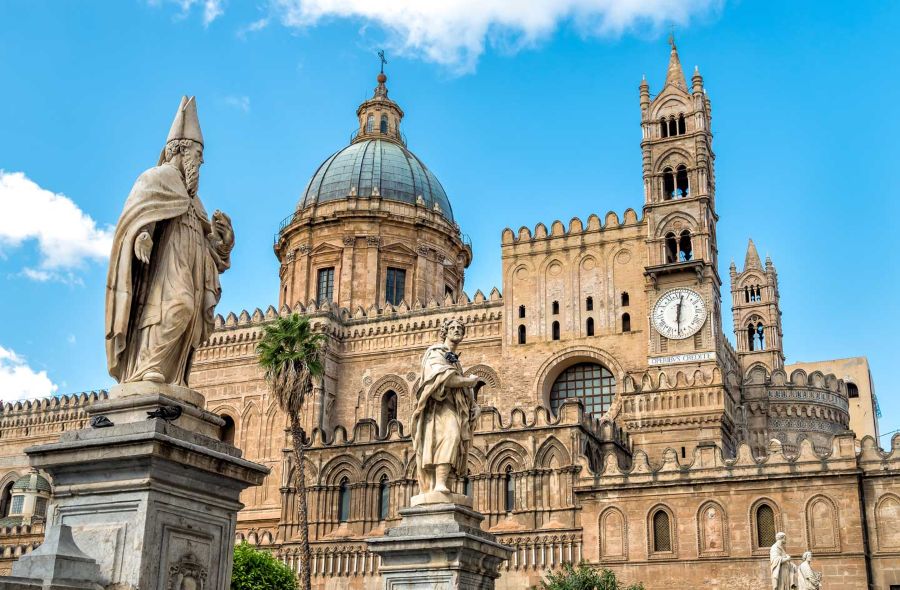
Palermo’s architecture tells a fascinating story of cultural fusion. The city blends Norman, Arab, Gothic, and Baroque styles in its buildings and monuments. The Palermo Cathedral stands as a prime example, with its mix of architectural elements spanning centuries.
Turin’s elegant baroque and neoclassical architecture creates a more uniform cityscape. The city’s famous porticoed streets stretch for miles, protecting visitors from rain and sun while they explore.
The Royal Palace of Turin exemplifies the city’s regal past with its grand baroque façade and ornate interiors. The iconic Mole Antonelliana dominates Turin’s skyline, standing as both an architectural marvel and a symbol of the city.
Top Museums to Visit
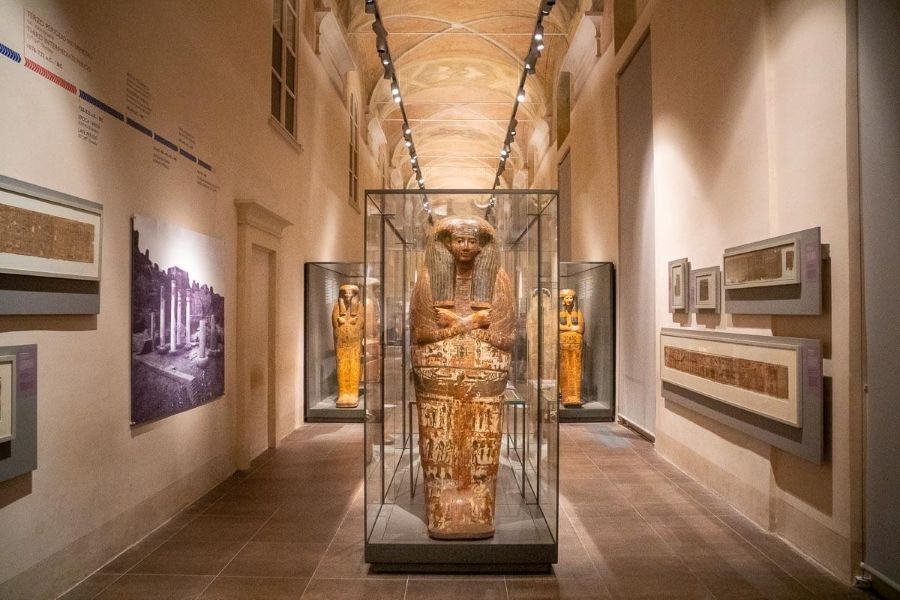
Turin’s Egyptian Museum ranks second only to Cairo’s in its collection of Egyptian artifacts. The museum houses over 30,000 pieces and attracts scholars worldwide.
The National Cinema Museum inside the Mole Antonelliana offers an interactive journey through film history. Its unique spiral exhibition space makes creative use of the building’s architecture.
Palermo’s Regional Archaeological Museum Antonio Salinas displays significant Greek and Roman artifacts. The collection includes stunning pieces from Sicily’s ancient settlements.
The Gallery of Modern Art in Palermo occupies the restored Palazzo Bonet. It features important works from Sicilian artists alongside national treasures.
Historical Sights and Landmarks
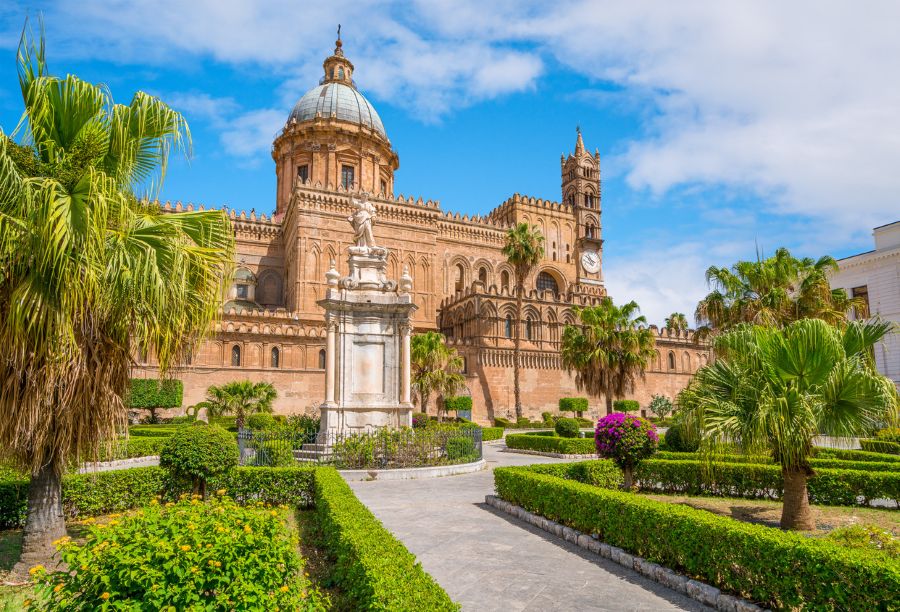
The Norman Palace in Palermo houses the stunning Palatine Chapel. Its golden Byzantine mosaics create an unforgettable sight that draws visitors from around the globe.
Turin’s Royal Churches showcase the city’s religious heritage. The Chapel of the Holy Shroud, recently restored, holds special significance for its connection to the famous Turin Shroud.
Palermo’s Quattro Canti marks the historic center’s heart. This baroque square features fountains and statues representing the city’s seasons and Spanish kings.
The Palazzo Madama in Turin serves as a testament to the city’s royal past. Its medieval fortress foundation contrasts with its baroque façade, highlighting Turin’s architectural evolution.
Leisure and Outdoor Activities
Both Palermo and Turin offer distinct outdoor experiences, from coastal activities to urban adventures. Each city provides unique shopping districts and plenty of ways to keep families entertained.
Beach Activities and Water Sports

Palermo shines with its Mediterranean coastline. Mondello Beach, just 20 minutes from the city center, features crystal-clear waters perfect for swimming and sunbathing. The white sand stretches for over a mile.
Water sports enthusiasts can try scuba diving at nearby dive sites. Local operators offer guided tours to explore underwater caves and marine life. Snorkeling spots dot the rocky coves around the city.
Turin lacks beaches but makes up for it with river activities along the Po River. Visitors can rent kayaks or join rowing clubs for day trips. The river banks feature walking paths and picnic areas.
Shopping Experiences
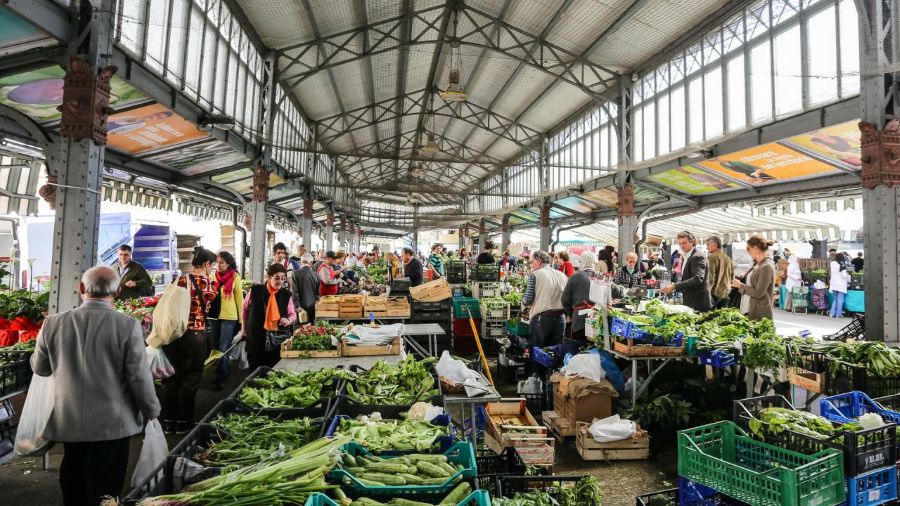
Turin’s elegant porticoed streets house high-end boutiques and historic shops. Via Roma and Via Garibaldi showcase designer stores and local fashion brands. The Porta Palazzo Market, Europe’s largest open-air market, sells fresh produce and local goods.
Palermo’s shopping scene centers around Via della Libertà for luxury items. The Vucciria and Ballarò markets offer authentic Sicilian products and street food. Local artisans sell handmade ceramics and textiles in the narrow streets of the historic center.
Family-Friendly and Adventure Opportunities
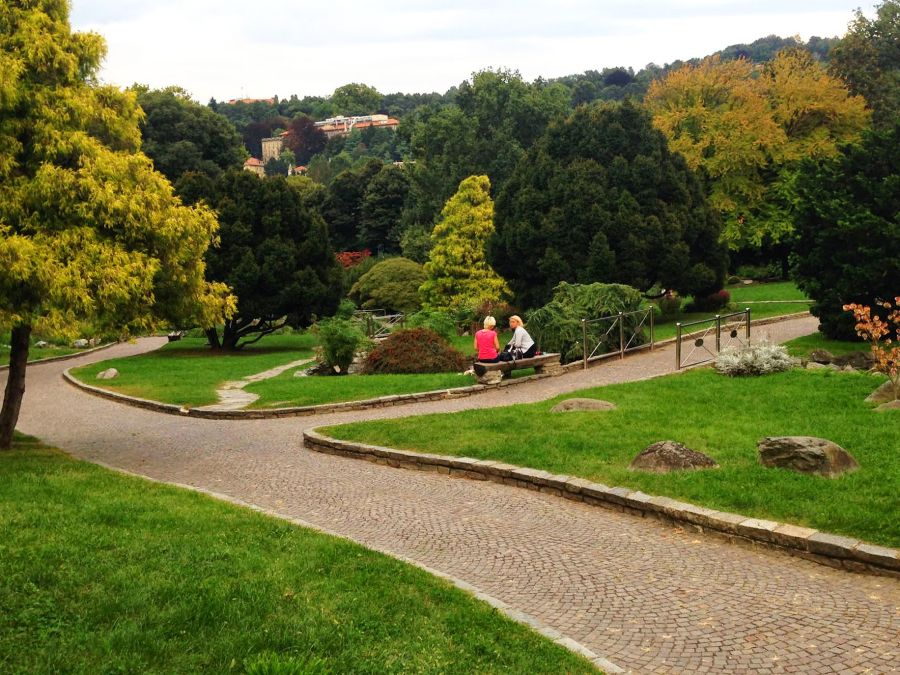
Turin’s Valentino Park provides green spaces for families. The Medieval Village inside the park offers interactive history lessons. The nearby Alps host skiing in winter and hiking in summer.
Kids love Palermo’s puppet theaters and interactive museums. Monte Pellegrino offers easy hiking trails with panoramic views. Families can join guided bike tours through the historic center.
Local tour companies in both cities organize day trips to nearby attractions. Turin’s chocolate workshops welcome children, while Palermo offers cooking classes featuring Sicilian dishes.
Food and Culinary Scene
Both cities offer distinct gastronomic experiences, with Palermo’s vibrant street food culture and Turin’s refined Piedmontese dining creating unique food adventures for visitors.
Dining and Cuisine Options
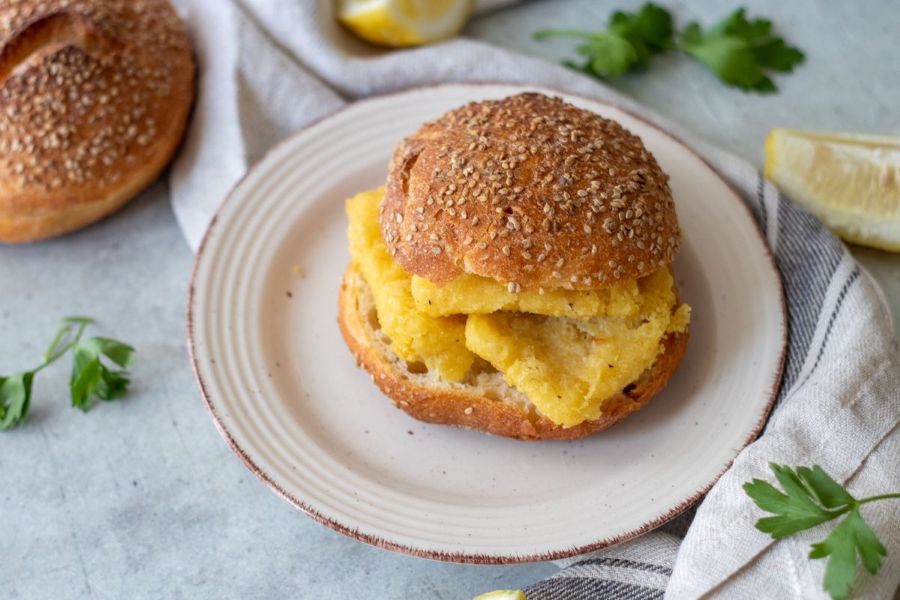
Palermo shines with its bustling street food scene. The famous Ballarò market serves up local specialties like pane e panelle (chickpea fritters in bread) and pani ca meusa (spleen sandwiches). These affordable treats give visitors a taste of authentic Sicilian flavors.
The city’s restaurants specialize in fresh seafood dishes and pasta alla Norma, a classic Sicilian dish with eggplant and ricotta. Small family-run trattorias dot the historic center, serving home-style cooking at reasonable prices.
Turin takes pride in its elegant dining scene. The city is famous for its chocolate-making tradition and invented the smooth chocolate-hazelnut spread that inspired Nutella.
Traditional Piedmontese restaurants serve rich dishes like agnolotti pasta and brasato al Barolo (beef braised in red wine). The city’s historic cafes, with their ornate interiors, offer perfect spots to sample bicerin – a layered coffee drink unique to Turin.
Nightlife and Socializing Spots
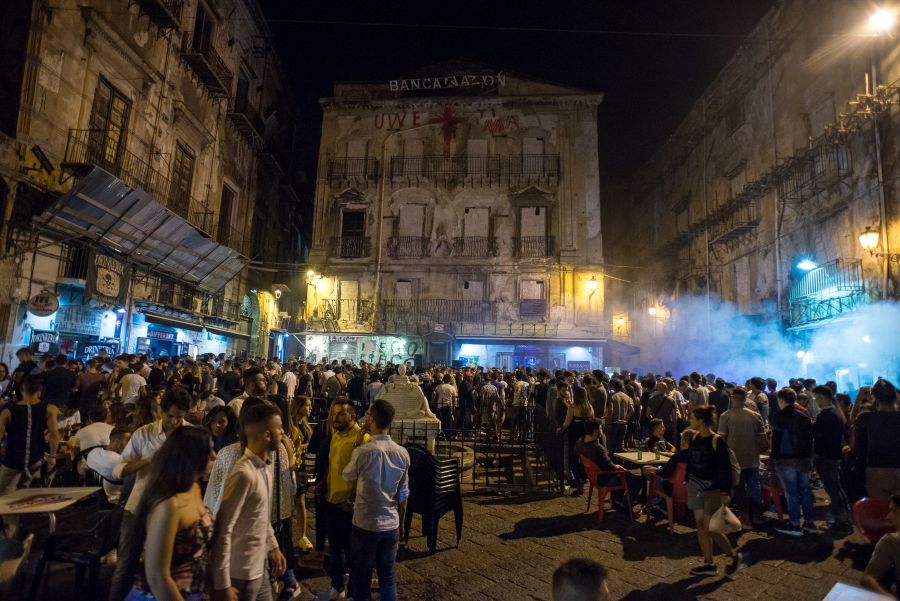
Palermo’s nightlife centers around the buzzing Vucciria market area. After dark, the market transforms into a social hub with wine bars and street vendors serving late-night snacks. Small bars tucked into ancient buildings serve local wines and Sicilian appetizers.
Turin’s aperitivo culture stands out. Many bars offer extensive buffets with drink purchases between 6-9 PM. The San Salvario district comes alive at night with trendy cocktail bars and music venues.
The city’s historic cafes stay open late, serving traditional drinks and pastries. Popular spots include Caffè Torino and Caffè San Carlo in Piazza San Carlo, where locals gather for evening socializing.
Travel and Living Cost Comparison
Life in these two Italian cities costs quite differently. Turin tends to be pricier than Palermo, with a 19% higher cost of living across most expenses.
Expense Overview for Visitors
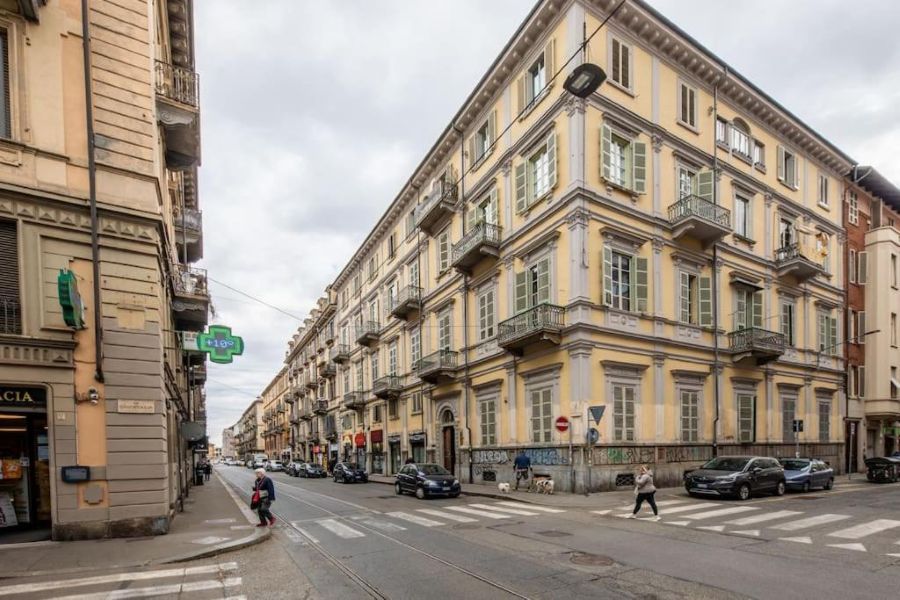
Daily costs in Turin add up faster than Palermo. A mid-range hotel room in Turin costs €120-150 per night, while similar rooms in Palermo go for €90-120. Restaurant meals, transit passes, and attractions also come at a premium in Turin.
Money-smart tourists visiting Turin should budget about €150-200 per day for comfortable travel. Palermo visitors can get by on €120-160 daily for the same comfort level.
Transportation costs stand out between the cities. Turin’s advanced metro system charges more than Palermo’s bus network. A single transit ticket costs €1.70 in Turin compared to €1.40 in Palermo.
Cost of Living for Residents
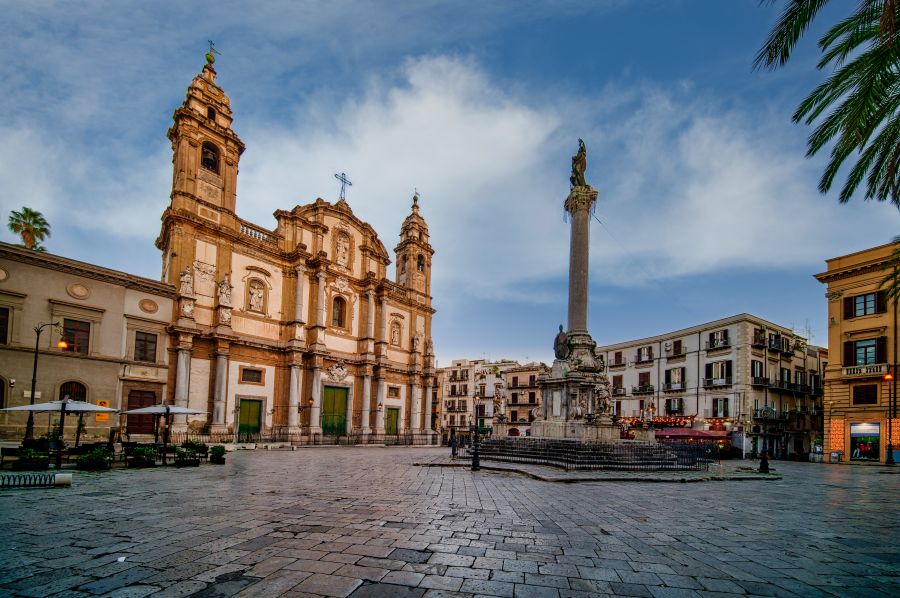
Monthly rent shows big differences. A one-bedroom apartment in central Turin averages €750, while Palermo’s comparable units run about €600.
Basic utilities like electricity, heating, and water cost roughly €160 monthly in Turin. Palermo residents pay around €140 for the same services.
Groceries and daily goods give Palermo another advantage. A typical grocery trip costs 15-20% less in Palermo than Turin. Local produce and fish markets offer great value in both cities.
The gap shows up in salaries too. Turin jobs tend to pay more, which helps offset higher costs. A typical salary covers about 1.3 months of expenses in Turin versus 1.2 months in Palermo.
Accommodation and Stay Options
Both Palermo and Turin offer diverse places to rest your head, from fancy hotels to cozy local spots. The two cities cater to different tastes and budgets with distinct lodging styles that reflect their unique characters.
Hotels for Different Budgets
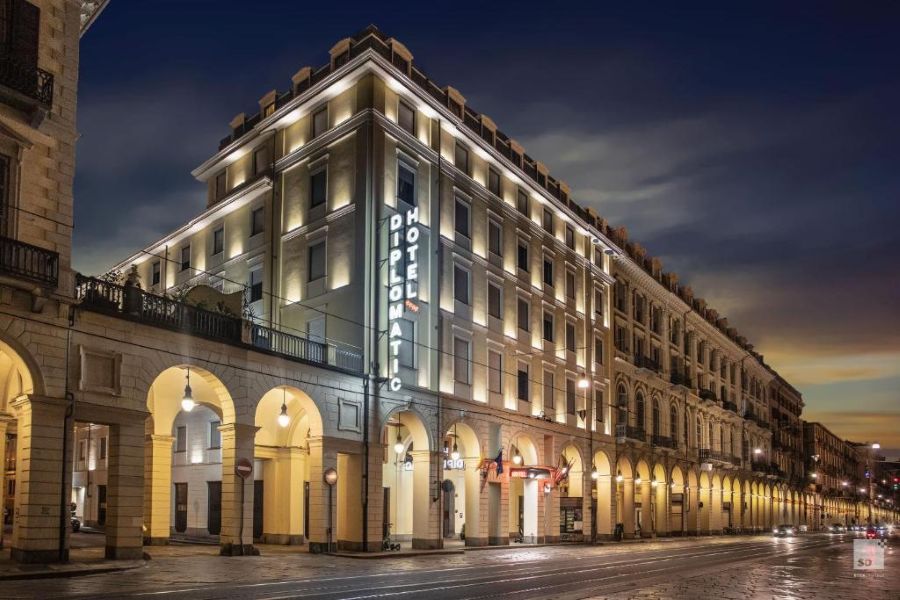
Turin’s hotel scene leans toward modern luxury, with many international chains dotting the city center. Five-star properties near Via Roma feature elegant rooms starting at €200 per night. Mid-range hotels in Turin cluster around Porta Nuova station, averaging €100-150 nightly.
Palermo’s hotels mix historic charm with value pricing. Budget travelers find clean rooms in Centro Storico from €50-80 per night. Boutique hotels in restored palazzos offer unique stays, though prices run lower than Turin’s equivalent properties.
Unique Local Stays
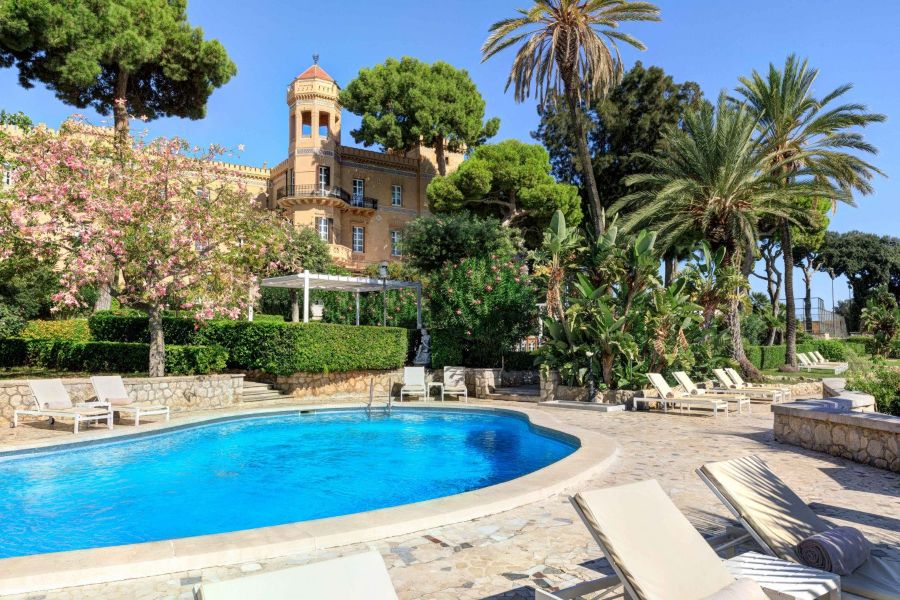
Turin shines with converted industrial spaces turned into design-focused apartments. Old chocolate factories and textile mills now house stylish lofts perfect for couples seeking something special. The Quadrilatero Romano district features restored townhouses with courtyard gardens.
Palermo’s local stays celebrate Sicilian hospitality. Guests can book rooms in aristocratic mansions complete with frescoed ceilings and antique furniture. Family-run B&Bs near Vucciria Market let visitors experience authentic neighborhood life. Backpackers love the social vibe of hostels in historic buildings around Teatro Massimo.
Traveler Types and Itineraries
Both Palermo and Turin cater to different types of travelers with unique attractions and experiences that match various interests and travel styles.
Solo Travel and Backpacking Tips
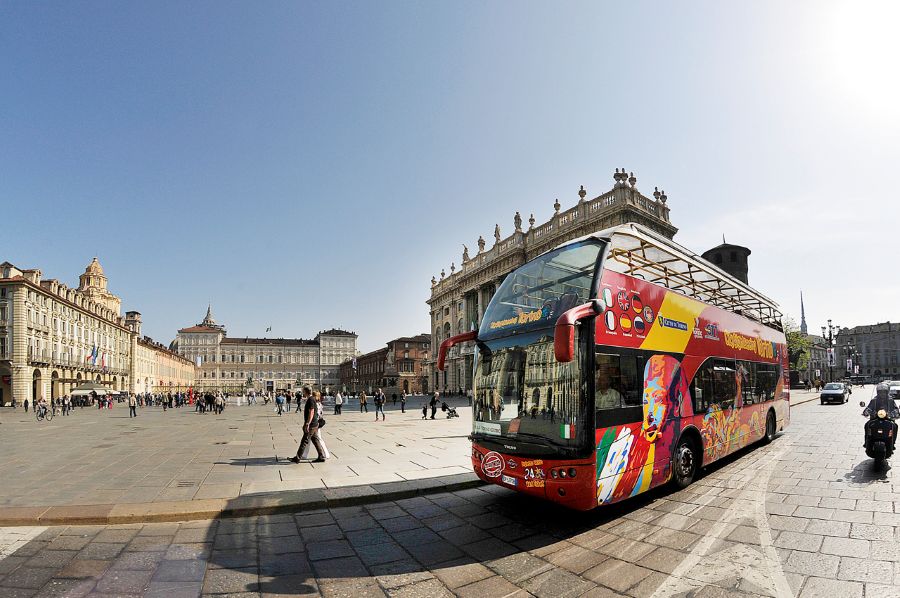
Turin offers excellent public transportation and walkable streets, making it budget-friendly for solo travelers. The city’s hostels are clean and affordable, with prices starting around €20 per night.
Palermo’s vibrant street markets like Vucciria and Ballarò provide perfect spots for solo travelers to sample local foods and meet people. The city’s affordable food tours let backpackers experience authentic Sicilian cuisine.
Public buses connect major attractions in both cities. Smart travelers can save money by getting multi-day transit passes.
Couple Getaways and Romantic Retreats
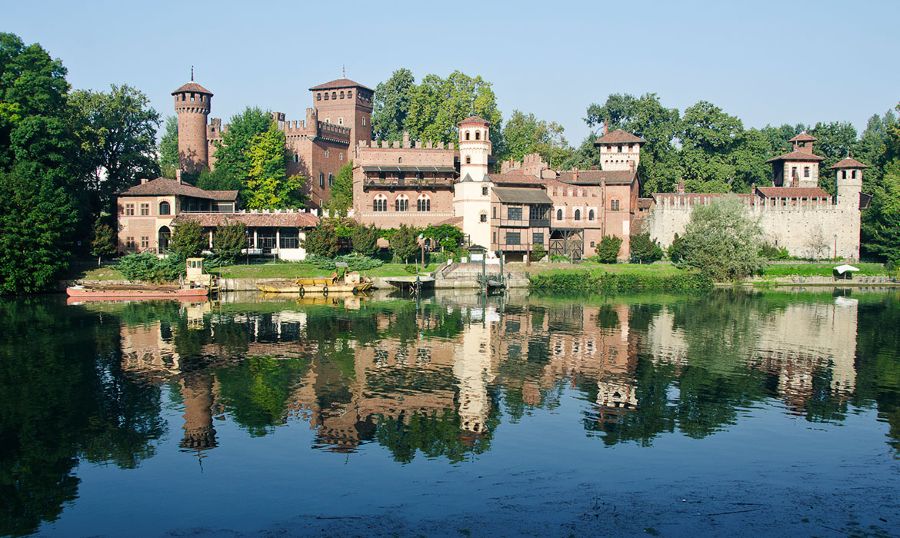
Turin’s elegant cafes and chocolate shops create perfect date spots. Couples love strolling through Valentino Park at sunset or sharing drinks at rooftop bars overlooking the Alps.
Palermo’s golden-hour walks along Mondello Beach spark romance. The Opera House hosts magical evening performances perfect for special nights out.
Both cities shine after dark. Twinkling lights illuminate Turin’s historic center, while Palermo’s outdoor restaurants buzz with energy.
Family Trips and Activities
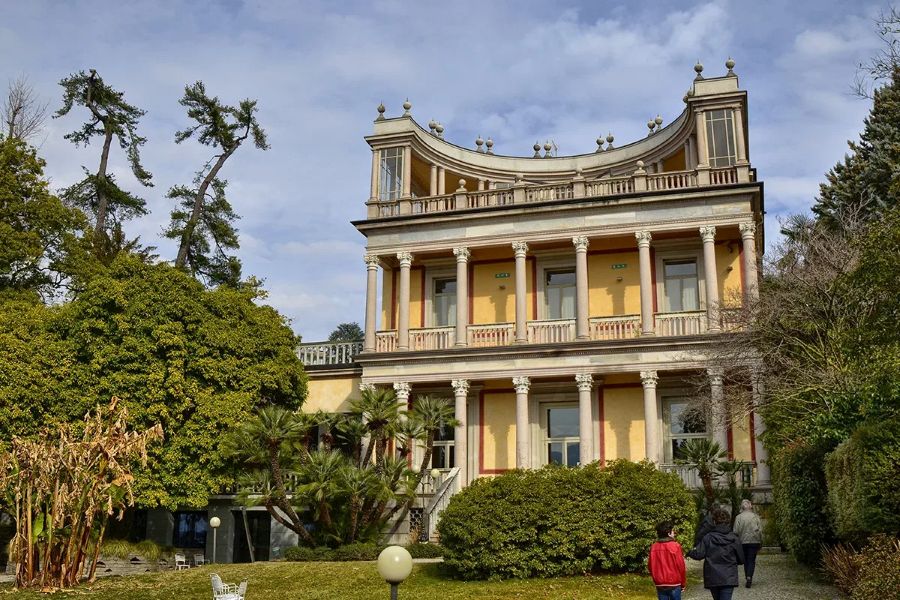
Turin’s Egyptian Museum fascinates kids with its mummies and ancient artifacts. The guided museum tours make history fun and interactive for young minds.
Palermo’s puppet theaters keep children entertained with traditional Sicilian shows. The nearby beaches provide perfect spots for family picnics and swimming.
Both cities have kid-friendly accommodation options. Turin’s apartments often include kitchens for family meals, while Palermo’s hotels frequently offer connecting rooms.
Parks and green spaces abound in both places. Turin’s parks have playgrounds and bike paths, while Palermo’s Villa Giulia gardens let kids run free.
Frequently Asked Questions
Both Palermo and Turin offer distinct experiences that showcase Italy’s diverse cultural heritage through their unique attractions, culinary traditions, and historical landmarks.
What unique attractions can tourists find in Palermo?
The Capuchin Catacombs house over 8,000 mummified bodies in their original clothing, creating an eerie yet fascinating historical site.
The Ballaro Market buzzes with local life, featuring vendors selling fresh seafood, produce, and Sicilian street food specialties.
Teatro Massimo, Italy’s largest opera house, stands as a masterpiece of Sicilian architecture and hosts world-class performances.
How does Turin’s cultural scene compare to other Italian cities?
Turin’s Egyptian Museum holds the world’s second-largest collection of Egyptian artifacts outside Cairo.
The city’s historic cafes, like Caffe Al Bicerin, preserve centuries-old coffee traditions and serve the famous Bicerin drink.
The Cinema Museum inside the Mole Antonelliana celebrates Turin’s role as Italy’s first filmmaking capital.
The Chiesa del Gesu features stunning baroque architecture and hidden tunnels beneath the church.
Palazzo Mirto offers a glimpse into aristocratic Sicilian life with its perfectly preserved 18th-century furnishings.
Local fishermen at the small port of Sferracavallo serve fresh catches at modest waterfront restaurants.
What are the must-visit historical sites in Turin?
The Royal Palace of Turin displays the Savoy dynasty’s opulent lifestyle with its grand state apartments and armory.
Palazzo Madama combines Roman gates, medieval fortifications, and baroque architecture in one fascinating structure.
The Cathedral of Saint John the Baptist houses the famous Shroud of Turin.
In terms of culinary experiences, how does Palermo stand out?
Street food markets offer authentic arancini, panelle, and sfincione that showcase Palermo’s Arab-influenced cuisine.
Local trattorias serve pasta con le sarde and caponata following centuries-old family recipes.
The city’s gelaterias specialize in unique Sicilian flavors like pistachio from Bronte and almond granita.
Are there any notable festivals or events exclusive to Turin?
The Chocolate Festival celebrates Turin’s chocolate-making heritage each November with tastings and workshops.
The Torino Film Festival attracts international filmmakers and premieres independent cinema.
The Luci d’Artista transforms Turin’s streets into an open-air light art gallery during winter months.
